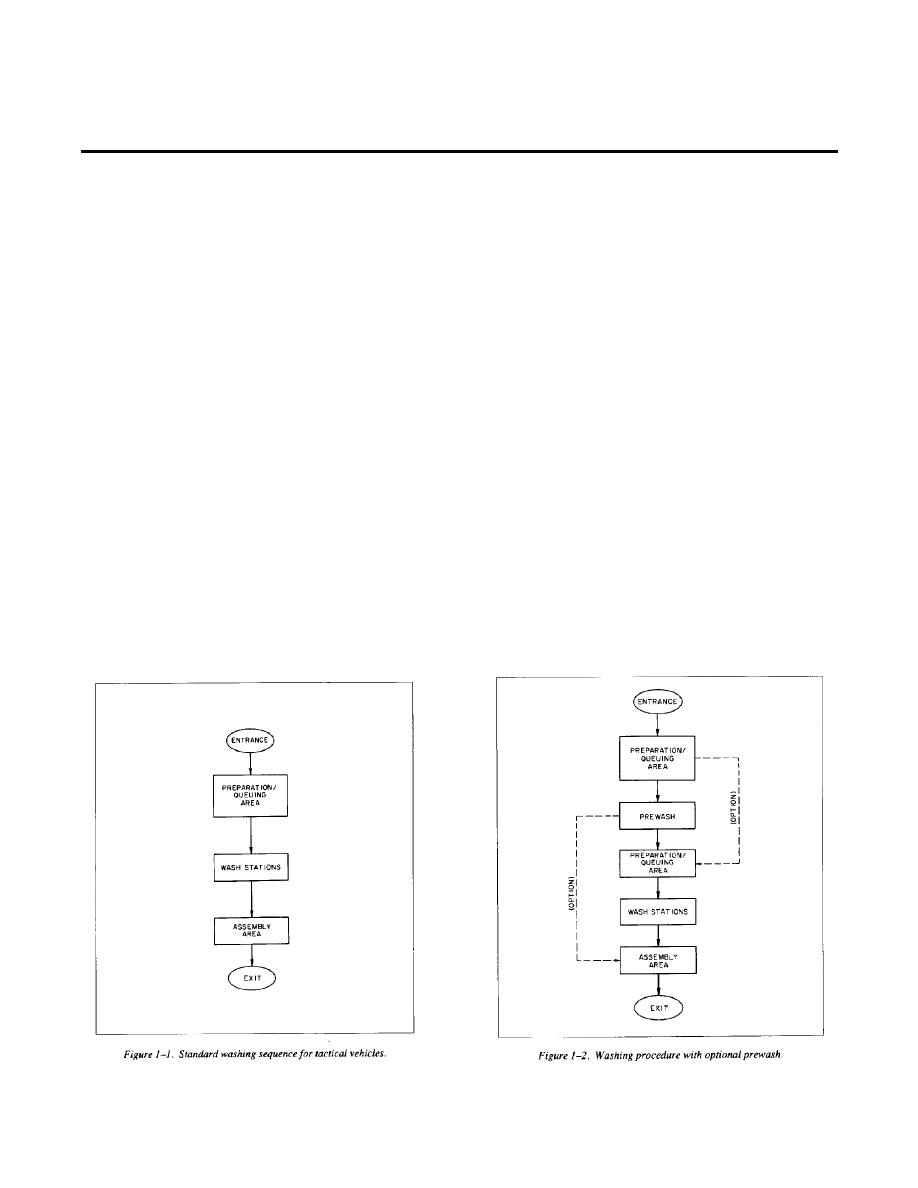
TM 5-814-9
CHAPTER 1
INTRODUCTION
1-1. Purpose
1-4. Applicability
This manual provides a comprehensive reference source for
Information in this manual applies to all CONUS Army in-
planning, and designing a central vehicle wash facility (CVWF)
stallations that maintain a fleet of vehicles for which there is a
at U. S. Army installations. The CVWF provides a rapid,
consistent washing requirement demanding cost-effective, on-
economical method for washing tracked and wheeled tactical
post facilities.
vehicles. The design elements provide for water pollution
control, solid waste disposal, and conservation of manpower
1-5. Explanation of terms and
and water.
abbreviations
1-2. Scope
Terms and abbreviations used in the manual are explained in
the glossary.
This manual is limited to wash facilities and wastewater
treatment for cleaning vehicle exteriors only; this design in-
1-6. Background
formation does not pertain to facilities for treating wastewater
from maintenance cleaning activities.
The Army has unique vehicle cleaning requirements in terms
of numbers, types of vehicles, washing time, and degree to
1-3. References
which washing is critical. Civilian technologies for cleaning
The following documents form a part of this manual to the
Army off-road tactical vehicles and treating the wastewater
extent referenced:
created by this washing are not recommended. However,
civilian technology may apply to facilities for washing vehicles
TM 5-820-1
Surface Drainage Facilities for Airfields and
in a transportation motor pool (TMP), most of which are the
Heliports
wheeled, on-road type such as sedans and buses. Figure 1-1
Standard Methods for Examination of Water and Wastewater
shows the recommended washing sequence for tactical ve-
(1987), American Public Health Association, 1015 15th Street N.W.,
hicles. For installations where specific conditions require that
Washington. D.C. 20005; American Water Works Association, 6666
a prewash be constructed, the washing procedure is shown in
S. Quincy Avenue, Denver, CO 80235; and Water Pollution Control
figure 1-2. The central vehicle wash facility is designed to
Federation, 2626 Pennsylvania Avenue, Washington, D.C. 20037
provide expedient, cost-effective vehicle cleaning for tactical
Elements of Water Supply and Wastewater Disposal, edited
vehicles. The concept incorporates water conservation in-
by G.M. Fair, J.C.D. Geyer, and D.A. Okun, Second Edition (1971),
cluding recycle techniques and pollution control.
John Wiley and Sons, Inc., 605 Third Avenue, New York, NY 10158
1-1


 Previous Page
Previous Page
